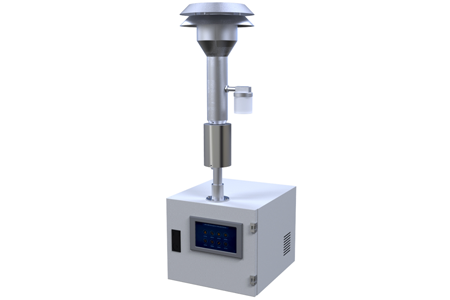Why do PM2.5 and PM10 Have "Upside-down Phenomenon"?
(2021年)http://www.zetian-group.com/products/dpm-6000-pm-monitor-pm-2.5-pm-10/
HANGZHOU ZETIAN TECHNOLOGY CO., LTD was established in 2008, and has national wide impact in China now as a fast-growing company specialized in environmental pollution monitoring and industrial process control. Our instruments and emission analyzers can be customized by our professional staff who understand your compliance testing needs and provide you best solutions. We focus on Ultra-violet DOAS gas analyzer, Laser TDLAS gas analyzer, continuous emission monitoring system, etc, basically covering air pollution monitoring, metallurgical industries, chemical, refinery industries, cement, sulfur recovery, flue gas and other online air quality monitor needs. We also provide water quality testing. Our friendly and professional staff are always ready to provide technical support to our customers.
1. What is the "Upside-down Penomenon" of PM2.5 and PM10?
In the ambient air quality standard, PM10 is defined as the particulate matter in the ambient air with an aerodynamic equivalent diameter less than or equal to 10μm. PM2.5 is defined as the particulate matter in the ambient air with an aerodynamic equivalent diameter less than or equal to 2.5μm.
By definition, PM2.5 is a part of PM10. So theoretically the concentration of PM10 measured at the same place and at the same time should be greater than PM2.5. However, in actual monitoring work, there will occasionally be a strange phenomenon where the concentration of PM2.5 is greater than the concentration of PM10, which is commonly known as "Upside-down Phenomenon".
2. Why does the phenomenon appear?
The mainly reason is that testing PM10 and PM2.5 uses different PM measuring devices.
information to public authority to view.
At present, the common particulate matter monitoring methods are mainly divided into two categories: oscillating balance method and β-ray method. With the advancement of technology, β-ray method instruments are divided into sampling tube constant temperature heating, dynamic heating, etc.; oscillation balance method instruments are further divided into simple oscillation balance method and oscillation balance method combined with membrane dynamic measurement system.
1) Whether to use dynamic heating
When dynamic heating is used, since the heating temperature can be automatically adjusted according to the relative humidity in the air, while preventing condensation in the sampling tube, it minimizes the loss of volatile components caused by the heating of the sampling tube. Thus when dynamic heating is used, the measured result will be higher than the constant temperature heating method.
2) Whether to add membrane dynamic compensation system
After the combined membrane dynamic compensation method, the sample gas dehumidification device is added without heating the sample at a high temperature. At the same time, the compensation system is used to compensate for the volatilization loss of volatile components. Therefore, the measured result of the oscillation balance method combined with the membrane dynamic compensation method will be higher than the oscillatory balance method.
In this way, at the same site, if only the PM2.5 monitoring equipment is equipped with a membrane dynamic compensation/dynamic heating system, but the PM10 is not installed, it will easily appear upside down.
3. How to reduce "upside down"?
Taking into account the differences between different methods, it is recommended that when choosing PM10 measurement device and PM2.5 measurement device, automatic pm monitor of the same principle should be used as much as possible. And based on the latest understanding of particle monitoring technology, at the same time, the use of oscillating balance and membrane dynamic compensation system method or the β-ray plus dynamic heating system method, as well the simultaneous monitoring of PM10 and PM2.5 can effectively reduce the probability of the occurrence of upside-down phenomenon.
- このできごとのURL:



コメント